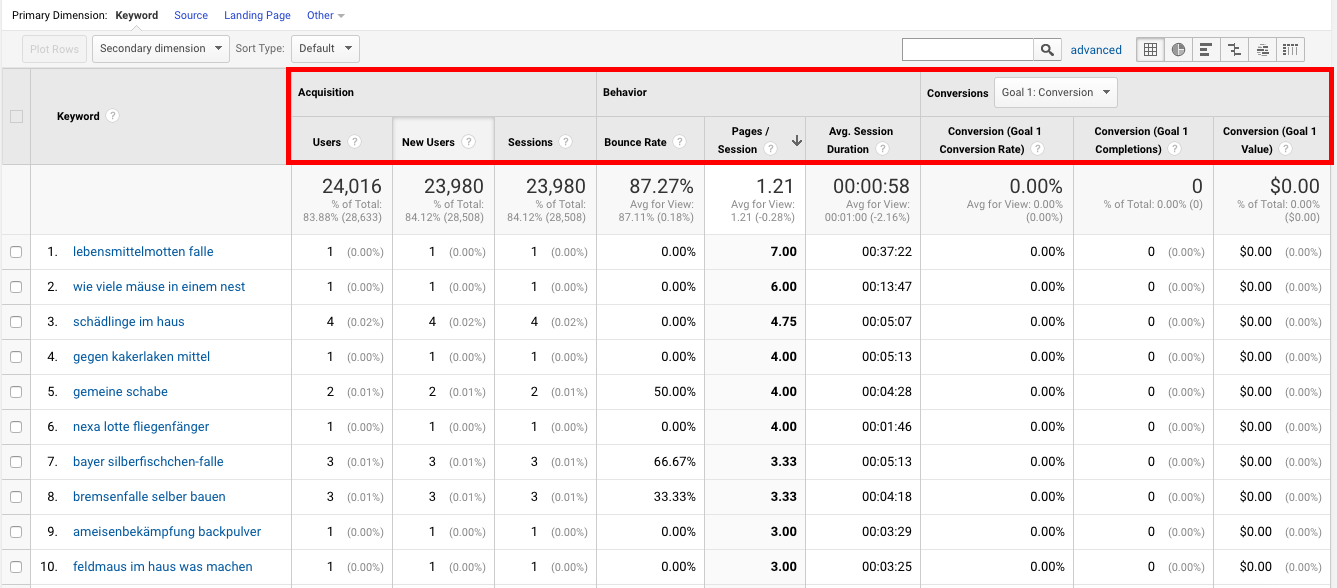Exploring Google Analytics Secondary Dimension: Techniques and Benefits
Unlocking the Power of Additional Dimension Analytics for Improved Information Insights and Decision-Making
In the world of information analytics, key measurements often take the limelight, yet the real depth of insights exists within the world of second measurements. By taking advantage of the power of additional dimension analytics, organizations can introduce surprise patterns, uncover connections, and extract more purposeful verdicts from their information.
Significance of Secondary Measurements
Discovering the relevance of secondary dimensions in analytics unveils the hidden layers of information insights essential for educated decision-making in numerous domains. Secondary measurements supply a deeper understanding of primary data by offering added context and point of views. By incorporating second dimensions right into analytics, organizations can draw out much more nuanced and extensive insights from their datasets.
One key value of secondary measurements is their ability to sector and categorize main data, enabling a more in-depth analysis of details subsets within a dataset. When looking at the data as a whole, this division enables organizations to identify patterns, patterns, and outliers that may not be noticeable. Additional measurements aid in uncovering connections and dependences in between different variables, leading to more precise projecting and predictive modeling - secondary dimension.
Additionally, additional measurements play an essential function in improving information visualization and coverage. By including second dimensions to visualizations, such as graphs or graphes, experts can develop extra useful and insightful representations of data, assisting in far better interaction of searchings for to stakeholders. On the whole, the assimilation of second measurements in analytics is instrumental in opening the complete potential of data and driving evidence-based decision-making.
Key Advantages of Making Use Of Second Measurements
Making use of second measurements in analytics uses organizations a calculated advantage by enhancing the depth and granularity of data understandings. One vital advantage of integrating additional dimensions is the capacity to sector and filter information, permitting for a much more in-depth analysis of specific aspects within a dataset. This division allows organizations to gain a much more nuanced understanding of their audience, performance metrics, and various other critical information points. By dissecting data making use of additional dimensions such as time, location, tool type, or user demographics, companies can discover patterns, trends, and relationships that might or else continue to be covert.
Moreover, the usage of second measurements boosts the context in which primary data is translated. By leveraging secondary dimensions in analytics, companies can harness the complete potential of their data to drive better decision-making and accomplish their service purposes.
Advanced Information Evaluation Strategies
A deep dive into sophisticated information evaluation methods exposes innovative approaches for removing beneficial understandings from intricate datasets. One such technique is artificial intelligence, where formulas are see here utilized to determine patterns within data, predict outcomes, and make data-driven decisions. This method allows for the automation of logical design structure, making it possible for the processing of huge quantities of data at a click here now faster pace than traditional methods.
One more sophisticated method is predictive analytics, which uses analytical formulas and maker knowing techniques to forecast future end results based upon historical data. By analyzing fads and patterns, companies can anticipate consumer habits, market patterns, and potential threats, equipping them to make proactive choices.
In addition, text mining and sentiment evaluation are important techniques for removing insights from disorganized data resources such as social networks comments, consumer evaluations, and study actions. By evaluating message data, companies can comprehend customer viewpoints, determine emerging trends, and boost their services or items based on responses.
Enhancing Decision-Making With Second Dimensions

Enhancing decision-making via secondary measurements makes it possible for companies to make even more educated and targeted tactical selections. By segmenting consumer information based on secondary dimensions like buying history or interaction degrees, firms can customize their marketing techniques to certain target market sectors, leading to boosted conversion prices and consumer satisfaction. Additional dimensions can help identify relationships and partnerships in between various variables, enabling organizations to make data-driven decisions that drive development and productivity.
Applying Second Measurement Analytics
When integrating additional dimensions in analytics, companies can open deeper insights that drive strategic decision-making and enhance overall efficiency. Carrying out additional dimension analytics calls for an organized method to guarantee effective application of this effective tool. The first step is to recognize the crucial metrics and dimensions that straighten with the company's tactical objectives. This involves understanding the specific inquiries the organization looks for to respond to and the data factors needed to resolve them.

Moreover, companies ought to utilize advanced analytics tools and modern technologies to enhance description the procedure of incorporating additional measurements. These tools can automate data handling, analysis, and visualization, enabling companies to concentrate on interpreting understandings instead of manual data control.
Verdict
In verdict, second measurement analytics play a critical duty in boosting information understandings and decision-making procedures. By using sophisticated data analysis techniques and executing additional dimensions effectively, companies can open the power of their information to drive calculated service decisions.
In the realm of information analytics, key measurements typically take the spotlight, but the real deepness of insights exists within the world of additional dimensions.Utilizing second measurements in analytics provides organizations a strategic benefit by increasing the depth and granularity of information understandings. By leveraging additional dimensions in analytics, companies can harness the full possibility of their information to drive better decision-making and attain their business goals.
Carrying out data recognition processes and regular audits can aid maintain information high quality and reliability.
By making use of sophisticated information analysis strategies and carrying out secondary measurements efficiently, companies can unlock the power of their information to drive calculated business choices.